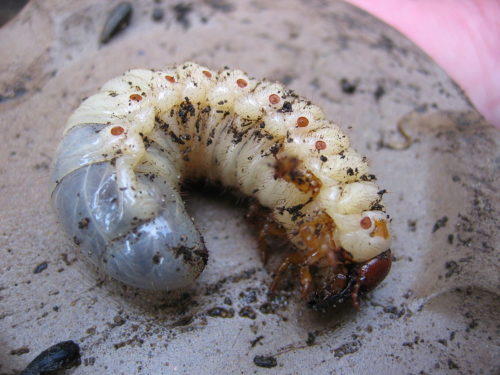Chafer grubs are the larvae of the Summer Chafer, Welsh Chafer and the Common Cockchafer, among others.
Do not confuse with:
Larvae of the Rose Chafer (Cetonia aurata)
Chafer grubs are the larvae of the Summer Chafer (Amphimallon solstitiale), Welsh Chafer (Hoplia philanthus), Garden chafer (Phyllopertha horticola) and the Cockchafer (Melolontha melolontha – also known as Maybug or Maybeetle), among others. These beetle species belong to the scarab beetles (Scarabaeidae) and their larvae have the same distinctive appearance: a shape like the letter “C,” caterpillar-like and a light grey color. The beetles do little harm; it is the larvae that eat the grass roots, causing the sod to loosen and dry out.
In addition, jays, magpies, jackdaws, crows, badgers and foxes damage the turf in search of grubs.
Where to find
- Grass
Control
Control with nematodes (roundworms) that specifically target the larvae. There is also a funnel trap that catches beetles with a bait.
Prevention
The natural enemies are some species of ichneumon flies and scoliid wasps, these parasitize the larvae. Hedgehogs, moles, mice and birds also eat chafer grubs. The planting of wild carrot (Daucus carota) contributes to a healthy population of parasitic flies and scoliid wasps. During the time these insects are laying eggs in grubs, they have high energy requirements. The flowers of the wild carrot (one of the few flowering species at that time) offer nectar at just the right time.
Occasionally releasing a clump of chickens onto the lawn also helps.

